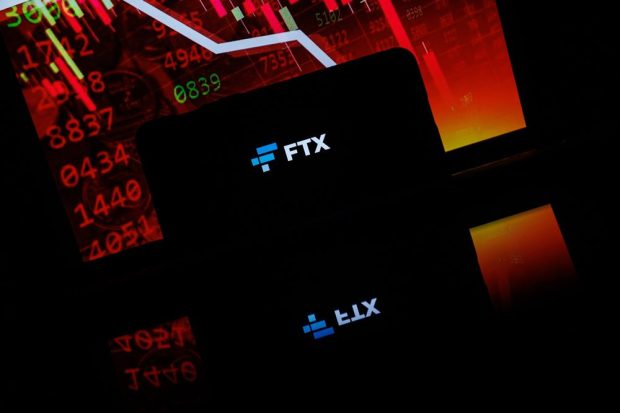FTX Crypto Bankruptcy Filing Shows $8.6 Billion Shortfall

If FTX was founder Sam Bankman-Fried’s alleged personal piggy bank, it wasn’t refilled.
Newly filed court documents introduced last week (March 2) reveal what John J. Ray III, FTX’s current CEO, has called a “massive shortfall” of “highly commingled assets” at the hollowed-out cryptocurrency enterprise, representing over $8.6 billion in total liabilities across all customer wallets and enterprise accounts. Bankman-Fried has pleaded not guilty to charges in connection with the case.
The bankruptcy presentation notes that “related party payables and receivables” include $9.3 billion of net borrowing by Alameda from FTX.com.
Overall, more than $2.15 billion in assets were found at FTX.com, and another $191 million was collected at FTX.US, compared to a total deficit of $8.69 billion.
“Both exchanges generally held digital assets in sweep wallets which were not segregated for individual customers,” the report stated.
Discovery Process Finds Highly Commingled Assets and Incomplete Record Books
Law firm Sullivan & Cromwell (S&C) and restructuring advisory firm Alvarez & Marsal have so far billed FTX tens of millions of dollars for their work untangling the mess that Bankman-Fried left at the hugely popular digital asset platform he founded, which was at one point the world’s third-largest crypto exchange by transaction volume.
Their second stakeholder presentation is a preliminary analysis of the defunct exchange’s shortfalls. It highlights that while $2.2 billion in assets have successfully been identified in FTX.com account wallets, only about a third of those assets, $694 million, are liquid.
That $694 million of “Category A Assets,” is composed of fiat, stablecoins and liquid cryptocurrencies such as bitcoin or Ethereum, while the “Category B Assets” making up the bulk of the funds found include illiquid tokens and certain other assets, including equity in FTX and its affiliate companies, that do not have an active trading market.
“The exchanges’ assets were highly commingled, and their books and records are incomplete and, in many cases, totally absent,” wrote CEO John Ray, adding that he believes it to be more important to provide transparency to stakeholders by making the asset information public now than to wait until the FTX Debtors have achieved certainty.
With regard to what this means for the crypto exchange’s more than one million creditors whose hard-earned money is missing, the FTX Debtors emphasized in their presentation that “it is not possible to calculate or predict customer recoveries based on the preliminary information in this presentation.”
Among the reasons given were that “[the] presentation does not attempt to adjust for commingling of assets or insider access to assets, which may be the subject of future, material adjustments,” as well as a “lack of recordkeeping & documentation resulting in challenges in locating crypto assets.”
The review of FTX customer balances was started Dec. 6 by the FTX Debtors, with an initial analysis completed Dec. 29 that found “significant balance issues,” as reported at the time by PYMNTS.
This latest presentation updates those findings with specific numbers.
“This is the second in what the FTX Debtors anticipate will be a series of presentations as we continue to uncover the facts of this situation,” said John J. Ray III.
Pressure Grows on FTX Peers to Prove Legitimacy
The collapse of FTX and its ripple effects across the digital landscape continues to bring further scrutiny to those of its peers that are still standing, chief among them the opaque crypto exchange Binance.
As reported by PYMNTS Sunday (March 5), Binance allegedly created its U.S. platform as a shield from regulators.
Last Thursday (March 2), U.S. Senators Elizabeth Warren (D-Mass.), Chris Van Hollen (D-Md.), and Roger Marshall (R-Kan.) sent a bipartisan letter to Binance asking for answers about the company’s finances, risk management and regulatory compliance as the global exchange faces investigations into potential crimes.
“Binance and its related entities have purposefully evaded regulators, moved assets to criminals and sanctions evaders, and hidden basic financial information from its customers and the public,” wrote the senators, claiming that Binance facilitated the laundering of at least $10 billion.
The letter’s 59 footnotes underscore the press scrutiny and negative speculation Binance’s operations have been under.
The senators are giving Binance and Binance.US two weeks to respond, calling on the exchanges to release their balance sheets and compliance policies and answer a set of questions by March 16.
For all PYMNTS crypto coverage, subscribe to the daily Crypto Newsletter.

